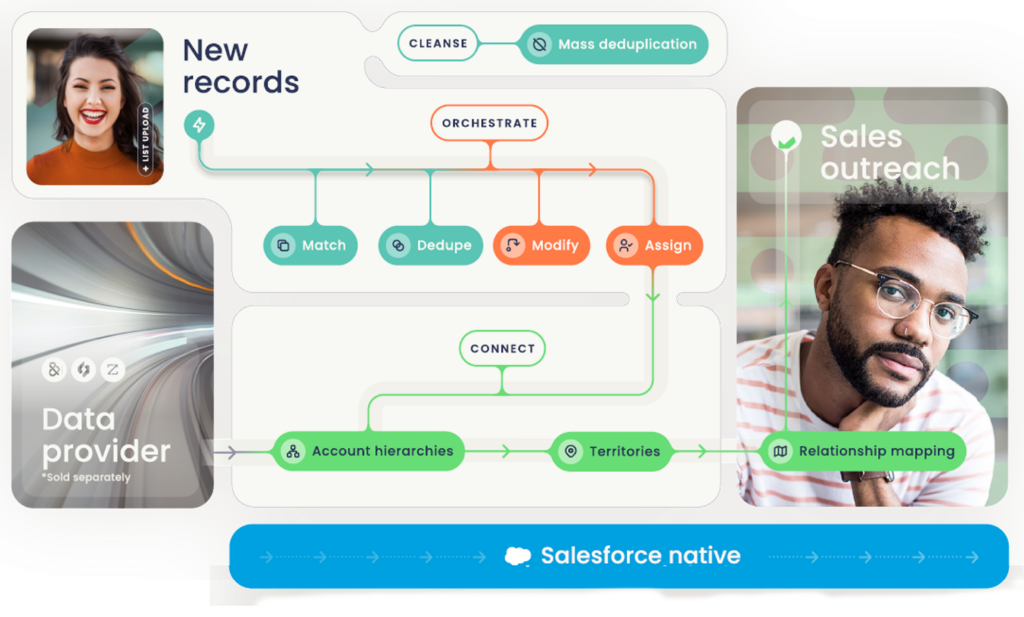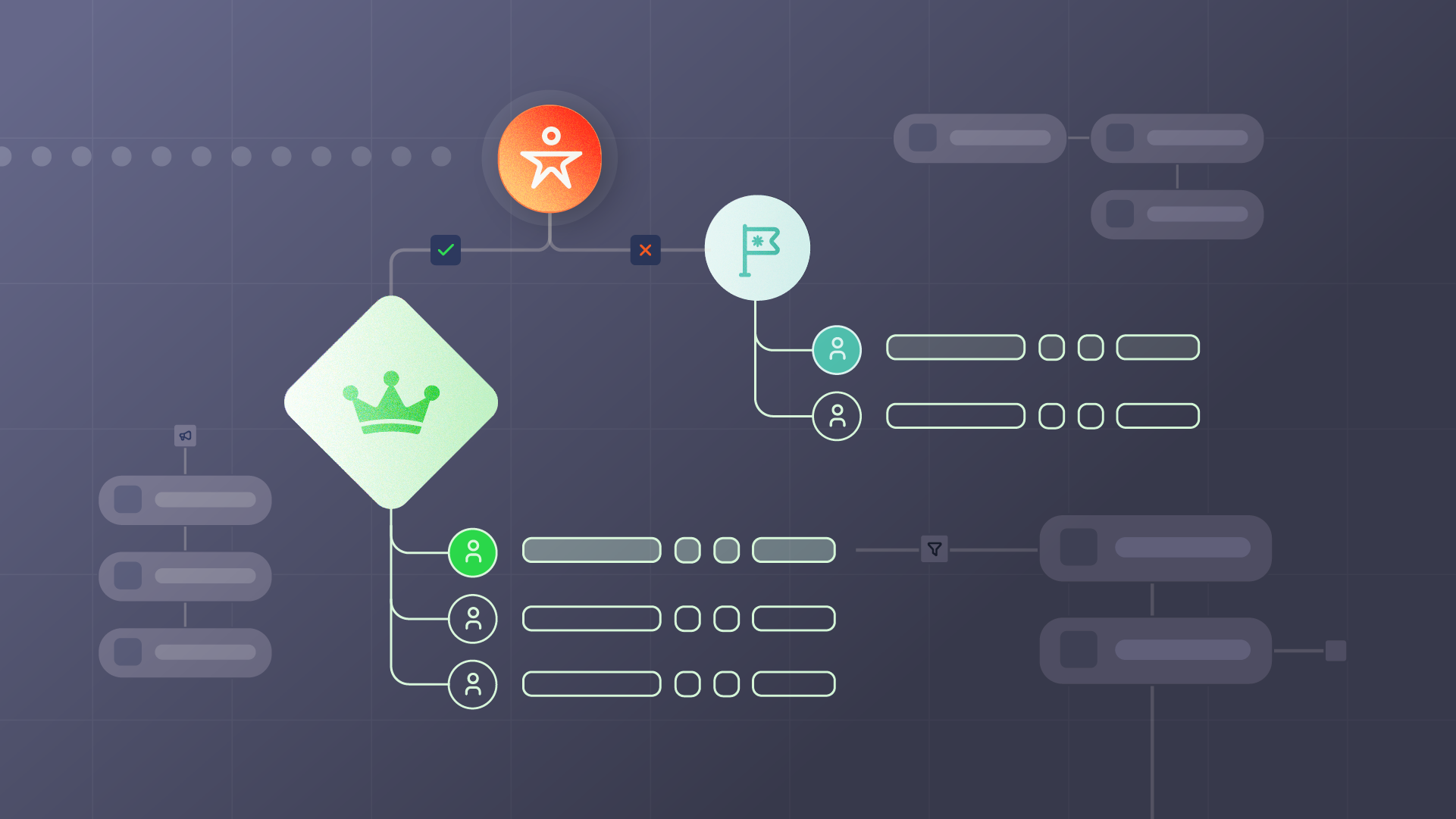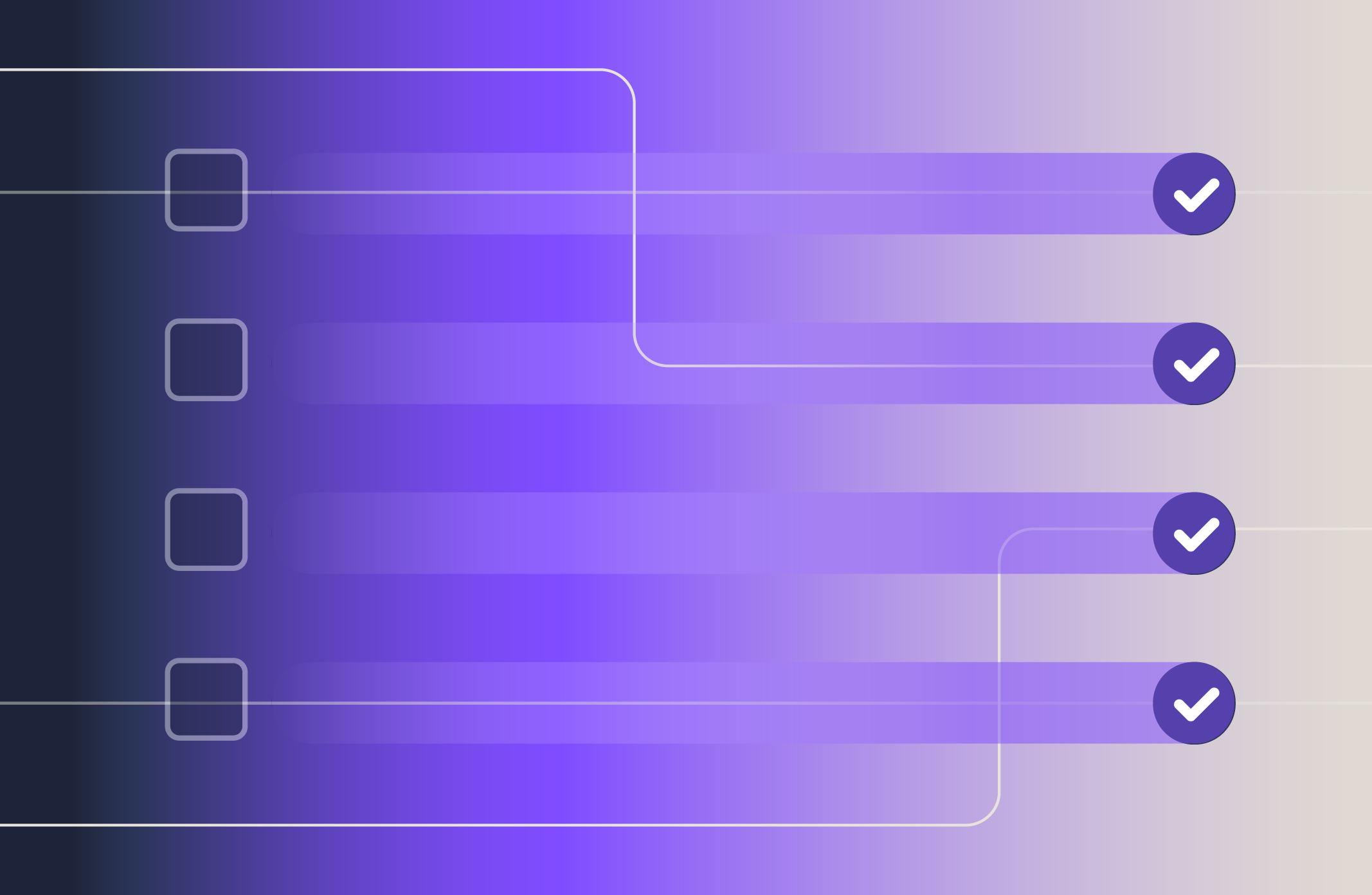Your biggest customers are rarely just a single legal entity – they’re complex ecosystems of brands, subsidiaries, and global entities.
As businesses and RevOps teams scale, so does the way that your GTM team sells. Your sales reps, account managers, and customer success teams don’t just care about legal ownership, they care about strategic relationships, partnerships, and common buying centers that might span across different brands.
But here’s the problem: In most cases, traditional account hierarchy data reflects legal business structures not how you’re actually selling. This disconnect between traditional legal structures and how businesses sell often creates blind spots and inefficiencies in your GTM motions.
5 reasons traditional account hierarchies might not work for your RevOps team
If your CRM doesn’t accurately reflect this real-world complexity, you’re flying blind.
And the impact on your RevOps and sales teams could look like this:
- Fragmented customer views: When records are scattered across disparate subsidiaries, you can’t get a complete understanding of total spend, product adoption across the enterprise, or even true churn risk for that entire enterprise.
- Inefficient land and expand: You can’t confidently identify whitespace or cross-sell and upsell opportunities within a complex account if you don’t know all the pieces.
Sales reps might even create duplicate accounts trying to find and understand who owns what. - Suboptimal routing and territory assignment: You can’t effectively assign leads or territories if your account hierarchies don’t reflect your selling motions.
- Elusive Global Ultimate Parents (GUPs): Having that top-level parent-company is crucial, but traditional methods or even data providers can struggle to accurately identify it – especially with constant M&As.
The result? It can take months or even years for this important information to enter your CRM. - Missing non-legal linkages: Your GTM strategy may need you to treat a collection of brands or franchises as a hierarchy or a single account, even if they’re not legally tied together.
Account hierarchies that follow traditional legal structures leave these strategic connections invisible.
Here’s an example of when your GTM strategy may not fit with account hierarchies that are structured around corporate accounts and legal ownership:
- Despite being part of Proctor & Gamble (P&G), Old Spice is considered a brand, not a legal entity.
- Traditional data providers such as Dun & Bradstreet or ZoomInfo won’t recognize Old Spice as a legal entity.
- As a result, it won’t match in their systems and won’t be automatically built into a corporate hierarchy.
- This creates a gap in corporate hierarchy data, specifically for brands or accounts that aren’t legally registered companies.
Build custom account hierarchies and augment them with Traction Complete
While third-party data providers are still incredible assets for businesses, here’s how you can address these gaps and augment custom account hierarchies with Traction Complete and Complete AI.
Our AI flow step leverages Large Language Models (LLMs) like OpenAI and can intelligently identify and link non-legal entities – the brands, franchises, or partnerships that are crucial for your selling motions but are invisible in standard legal account hierarchies.
Here’s how it works:
1. Set up your custom account hierarchy in Salesforce using Complete HIerarchies
Complete Hierarchies allows users to add different hierarchy types, including:
- Custom: A hierarchy that uses a unique ID, Parent ID, and Global Ultimate Parent IDs number for each account.
- List: Uses a domain field to group all accounts that share the same domain.
- Native: Leverages the Parent field within the Org to render the hierarchy.
- Connect: Will leverage the Parent Account, Global Ultimate, and custom identifier fields to build the hierarchy.
Once you’ve configured the hierarchy of your choice, save your settings and click the build hierarchy button to begin the job to link all accounts together and populate the Hierarchy ID field.
Once the job is finished, you can view the account hierarchy by navigating to an account record.
2. Configure the AI flow step to process Salesforce Records
The core of augmenting custom account hierarchies lies within Traction Complete’s AI flow step, a configurable component directly within your existing automation flows. This step is designed to orchestrate data processing using Large Language Models (LLMs) such as OpenAI.
- Select your model: Within the AI flow step configuration, select your preferred AI model (e.g., GPT, Gemini, Web Search).
- Craft your dynamic prompt: Define the specific question or instruction for AI. You can dynamically inject fields from the Salesforce record being processed (or related records) directly into your prompt.
For example, to identify a Global Ultimate Parent for fuzzy matching, your prompt could be: “Given the company name ‘[Account.Name]’ and its website ‘[Account.Website]’, identify its Global Ultimate Parent Company. Normalize its name for fuzzy matching and provide its primary domain.” - Define output mapping: Specify which Salesforce field will receive the AI’s response. This structured response will then be available for subsequent steps in your flow.
The flow processes the record’s data based on your prompt. Then, Traction Complete uses the structured responseto recommend new connections or augment existing ones within your account hierarchy, aligning with your custom logic and specific needs.
Augmenting Procter & Gamble with Old Spice
Traction Complete’s AI workflows solve the challenge of Old Spice by:
- Initiating a flow: A flow is triggered on the Old Spice Account record.
- Discovering the domain with AI: Once the prompt is configured, the AI successfully identifies pg.com, the domain for Procter & Gamble.
- Data Stamping: This domain is then stamped into a custom field on the Old Spice account record.
- Augmenting the account hierarchy: This newly enriched data point is then fed into Complete HIerarchies’ hierarchy suggestions engine. This engine, which already uses methods like domain matching and fuzzy matching, now has an additional, AI-derived data sources to identify potential parent-chld relationships.
3. Match, validate, and augment your account hierarchy in Salesforce
When the hierarchy suggestions engine runs (either in real-time or via a scheduled job), it leverages the AI-fueled global ultimate domain to match Old Spice to the existing Procter & Gamble account in Salesforce.
The system then flags Old Spice as an account “not currently related to the P&G hierarchy” but highlights it as a strong “potential match.” These AI-powered suggestions are presented to users in a dedicated report for hierarchy linkage opportunities.
Users can then review the suggestions and approve the changes directly within the report using inline editing. Upon approval, the change is written back to Salesforce, integrating Old Spice into the Procter & Gamble company hierarchy and ensuring that your CRM accurately reflects your strategic selling motions.
Tailor account hierarchies based your your unique GTM streategy

In today’s competitive B2B landscape, having an understanding of your largest accounts is no longer a luxury – it’s a non-negotiable.
By uncovering new insights and complimenting third-party data providers with Complete AI, Traction Complete empowers you to build and improve your existing data, right inside Salesforce.
Ready to build account hierarchies that truly reflect how your RevOps team goes to market? Learn more about our AI workflows or book a demo to see it in action today.




